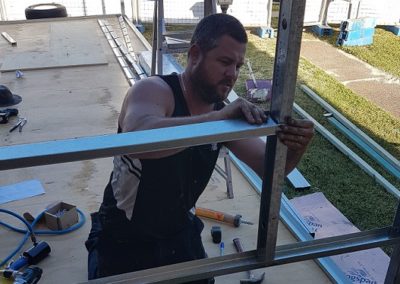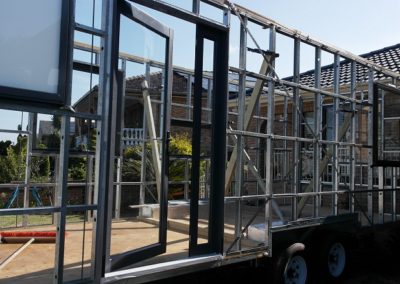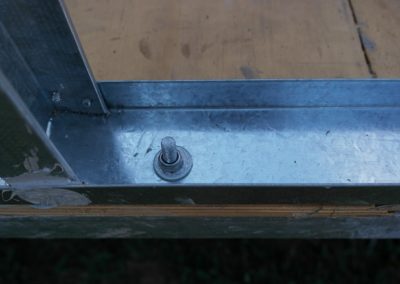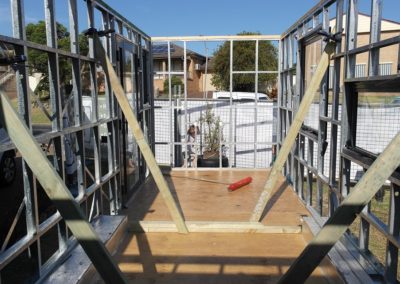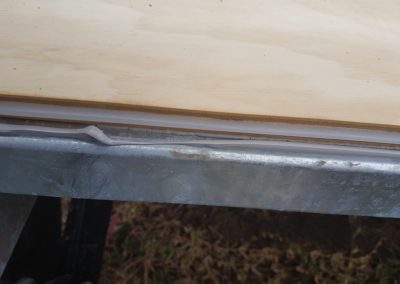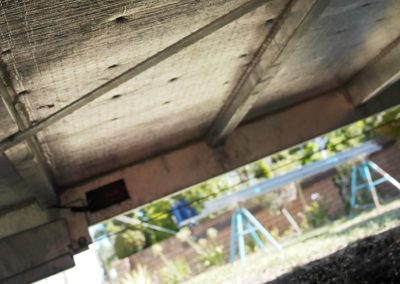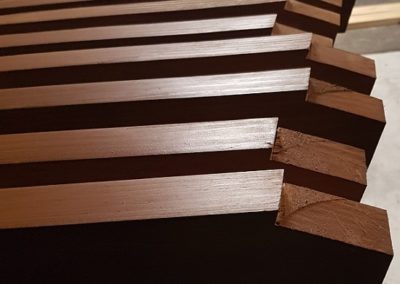Those of you who love building and renovation would understand my obsession with watching the Joy Box tiny house being built. The floor and insulation are down, the framing is up, the structure is braced and the windows and door are in!
Clay and the team are now working on dressing this gal with the Colorbond steel and timber cladding.
In this article, we give some detail about the tiny house structure and how we’ve kept the design light, practical, and of course – beautiful!
Tiny house flooring
Clay chose 17mm tongue and groove ply wood for the flooring. (If you’re building a tiny house with ply flooring, make sure to ask for a higher-grade ply to ensure it’s strong.)
With a smart trailer design to save on weight, cost and building time, we didn’t have to lay floor joists. The ply was screwed and glued directly on to the trailer.
We’ll choose a timber-look vinyl to finish the floor inside, so it’s easy to clean and looks great.
Under-floor insulation
We originally thought we’d be using a thick foam substance under the floor for insulation, but thanks to a wonderful local supplier, they put us onto Kingspan Air Cell. It’s Australian made and BCA (Building Code of Australia) compliant.
It’s only 4 millimetres thick and functions as a 2-in-1 insulation and moisture management solution. It’s lighter, easier to install, and will last much longer because it has a unique anti-tear material – good for being exposed to rocks and debris on the road!
Structure and materials
Significantly lighter than timber, the steel frame is anchored to the foundations (the trailer!) using a bottom plate that is glue and bolted (M10).
The frame itself has been assemble with rivets, screws and glue (my uncle has built cars and trucks his whole career and said to glue and screw everything!). The entire frame is braced with 1mm steel strapping; this stops the walls from moving in transit or in high winds.
Also, within the structure is a steel rod that has been threaded on each side from top to bottom. This anchors the roof and structure to the foundations.
We engaged an engineer, who has “signed-off” on the structure, although this is not (yet) required in NSW Australia. (It’s always safety first for Clay!)
Roof structure
To give the interior of the Joy Box a greater sense of spaciousness, there will not be a ceiling. Instead, we’re using timber framing because we’re exposing the beams and rafters. (So pretty!).
Clay sourced clear pine; there are no knots in the timber, making it much stronger and oh-so beautiful.
We have sacrificed on weight here for aesthetics, so we will have to “go light” elsewhere in the build to make sure she’s well under 3500kg!
On top of the timber is painted, V-groove panelling – beautiful!
What’s next?
Sign up for our newsletter so you don’t miss out on our next article that will go into detail about off-grid plumbing, solar and power storage. The Joy Box will function completely off grid!
Click on the image below to view the image gallery to see our progress!
Read the article below for
more photos and details!
.


